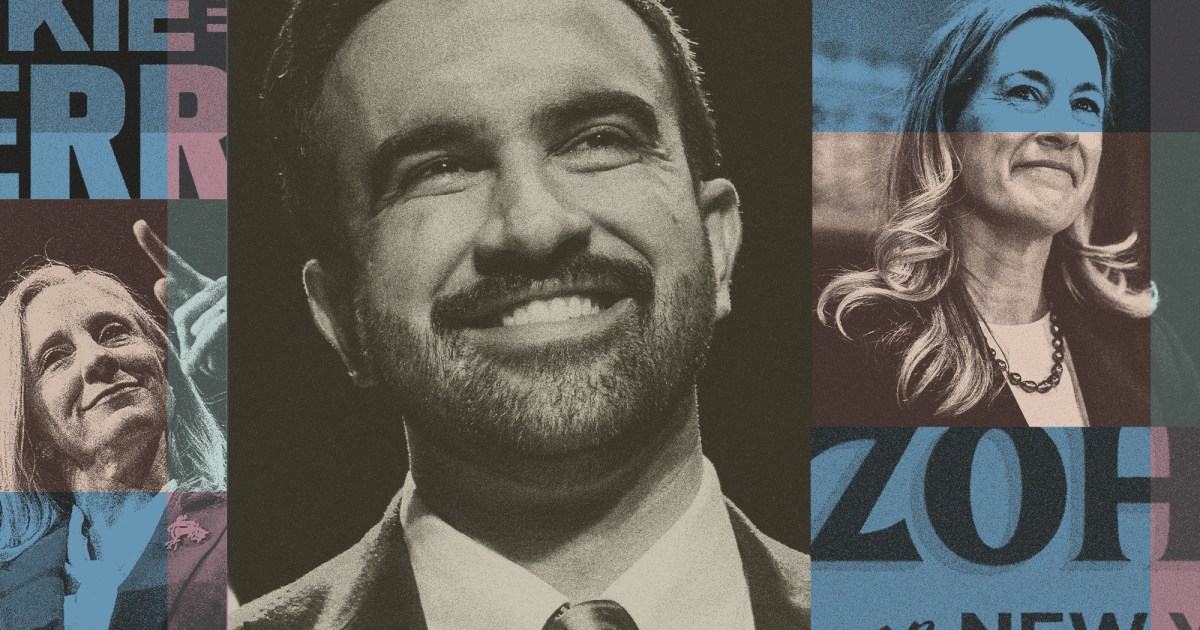A version of the below article first appeared in David Corn’s newsletter, Our Land. The newsletter comes out twice a week (most of the time) and provides behind-the-scenes stories and articles about politics, media, and culture. Subscribing costs just $5 a month—but you can sign up for a free 30-day trial.
Ever since the reasonable woman lost to a narcissistic, racist, and misogynistic autocrat wannabe, the Democratic Party has been going through yet another painful round of the all-too-familiar debate: Should the party move to the center or adopt a more progressive stance to amass an electoral majority? This face-off has been recurring within the party for decades. For all the jawboning over the years, it has produced no consensus, and this fight is…boring. With the election results last week—a Democratic sweep everywhere—the debate is over. Or, at least, it should be.
That doesn’t mean there’s a resolution to the binary argument. One can end a debate without an ultimate and final decision. That’s what the Democrats ought to do. There’s never been a clear answer to the center-or-left question. And this election showed that within the party, lefties, such as Zohran Mamdani in New York, and centrists, such as Abigail Spanberger in Virginia and Mikie Sherrill in New Jersey, can each kick ass. Many commentators have made the obvious point: Candidates need to match the local electorate. Mamdani likely could not win statewide office in Virginia, and Spanberger likely could not excite the young voters who turned out in NYC for the democratic socialist.
There’s no need for the Democrats to continue shooting at each other and feeding the notion they have an identity crisis. The message is simple for them: We have a large tent and, dear voters, we offer you a buffet.
The Democrats reflect a wider swath of the electorate. That’s not a weakness. It’s a strength they should embrace.
Looking for a politician to identify with? We give you a choice: Mamdani, Spanberger, Sherrill, Gavin Newsom, AOC, Andy Beshear, and others. Take your pick. No single one of them must be anointed the leader of the party. Desire a fierce progressive who will (rhetorically) kick Trump in the teeth? There’s this young buck in New York. Want a savvy strategist with a mostly liberal record who strives not to be seen as too liberal? Check out the governor of California. Looking for less-splashy, nose-to-the-grindstone workhorse politicians (big on mom energy), see Virginia and New Jersey. The Democratic Party can be a choose-your-own-adventure party. It is not in disarray. It is diverse. It even has something of a unifying message—affordability—which can be tailored to different electorates. In New York City, Mamdani vowed to address high rents; in New Jersey, Sherrill focused on rising energy prices.
This is the opposite of the current GOP, which is no more than a homogeneous cult of personality tied to one man and his whims. It has jettisoned principles and policies to serve an erratic authoritarian. It’s nothing but Trump. Love him, love the party. Otherwise, you’re out of luck. The Democrats, in contrast, reflect a wider swath of the electorate. That’s not a weakness. It’s a strength they should embrace.
Indeed, the party will more tightly define itself when it chooses a presidential nominee. That’s a winner-take-all process. One person gets the party crown and campaigns for the highest office. In European parliamentarian systems, parties as a whole compete to gain control of the executive branch. Not so here. In the United States, parties must select and swing behind a single politician who comes to represent the party. That will happen in 2027 and 2028, and what’s likely to be a competitive and robust primary contest will produce the party’s banner carrier. Until then, the Democrats should not obsess over the left-center branding issue.
For about 60 years, the Democrats have been a center-left party. Both sides by now ought to understand that they need each other.
For about 60 years—ever since Southern conservative Democrats bolted the party in response to its support for civil rights measures—the Democrats have been a center-left party. Both sides by now ought to understand that they need each other. It’s my hunch—and you might disagree—that a fully left party probably could not succeed on the national level in the United States within its two-party duopoly. And given the profound threat posed by Trump and his cronies, the formation of a popular front that covers a wide stretch of the ideological gamut is essential. Last week’s elections demonstrate that the Democrats, with the help of independent voters, can build that.
Mamdani’s triumph was stunning, his win a tremendous accomplishment for the party’s left wing. He’s a generational talent. And now he will have the opportunity to prove whether a democratic socialist can successfully implement left-wing proposals—which should yield important lessons for progressives. Governing the sprawling Big Apple government, which too often has been prone to corruption, is a tough task, let alone changing its culture and injecting into it an ambitious agenda. Let’s wish him well. The question now is not whether a democratic socialist is good for the party, but whether one can succeed governing the biggest city in the nation.
In a way, the New Jersey race was more of an indicator of the current state of politics in America. Sherrill led Republican Jack Ciattarelli, a GOP businessman who had twice run for governor, by only a few points in the polls prior to Election Day. He had previously positioned himself as a not-so-Trumpy Republican. In this race, he campaigned with MAGA personalities and enthusiastically accepted Trump’s support. But he did not dwell on the president. A poll in October showed incumbent Democratic Gov. Phil Murphy’s job approval rating at 35 percent—lower than Trump’s.
The Democratic Party does not have time for navel-gazing. It’s a to-the-barricades moment.
This looked like a tight contest, especially since four years ago Murphy beat Ciattarelli by only 3 points in this Democratic state. Yet Sherrill won by a whopping 13 points. Jersey voters rallied behind this centrist Democrat more than New Yorkers flocked to Mamdani. And it’s hard not to read her margin of victory as a referendum on Trump. Though voters were dissatisfied with the Democratic governor and upset with rising food prices and skyrocketing health care premiums, they did not take it out on Sherrill. They renounced the candidate of the Trump Party. This is the election that Republicans across the country—especially those few House members in swing districts—ought to worry most about. Their biggest concern should not be a young socialist, but a working mom who campaigns as a mainstream Democrat.
At this moment, the barbarians are not at the gate; they are inside the White House, attacking democracy and deconstructing the United States of America. Millions of citizens are at risk of going hungry and losing their health care. The Democratic Party does not have time for navel-gazing. It’s a to-the-barricades moment.
I have no illusions. There will be squabbling over strategy and tactics. Centrists will still fear the agenda of progressives, and the progressives will gripe about opposition and obstacles posed by centrists. Look at the disagreement within the party over resolving the government shutdown. Yet these election results are a sign that that Democrats can win without settling this big who-are-we matter. Voters are not waiting for this debate to be concluded and a winner proclaimed. Few are interested in it. Precisely calculating an ideological course that appeals to a particular group of voters is not the key to Democratic victory. It can be a distraction. “Let a hundred flowers bloom, let a hundred schools of thought contend.” Mao said that. He was a dictator who did not stick to his own advice, but that’s the right idea. Different strokes for different folks, as Sly Stone sang.
These off-year elections—let’s call it the Ballroom Blowout—included surprising Democratic wins in Mississippi and Georgia, and there’s a lesson for Democrats. With Trump continuing his cruel mass deportations, holding let-them-eat-cake parties while threatening food stamps for millions, razing parts of the White House and showing off his new marble bathroom, turning tariffs on and off recklessly, doing little to address economic concerns, and ignoring court orders, the Democrats are presented with much opportunity. Continuing to argue among themselves is counterproductive. They don’t need consensus to succeed. They need authentic candidates who have something to say and who convince voters they will be fighters for them. Remember what a Republican president once said about a house divided. The Democrats have been shown the way.














